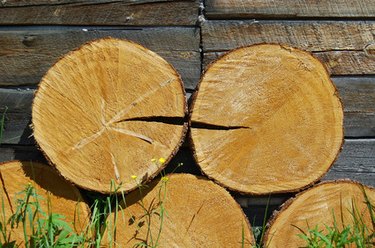
Differences between marine plywood and treated plywood include the types of wood and quality of the individual boards used to build up the panel. The type of glue and curing method are critical components as well.
Marine Plywood
Video of the Day
The woods most commonly used for marine grade are western larch and Douglas fir because they are strong and have fewer voids or knots, where moisture can accumulate.
Video of the Day
Treated Plywood
Treated plywood is made of softer wood than its marine counterpart to allow better absorption of the chemicals used to protect it from mold and fungi.
The chemicals may leach over time into the surrounding area. This can be lessened by application of a sealer of varnish or paint.
Because voids and gaps are tolerated in treated plywood, it can delaminate or warp when exposed to the weather.
The Glues
Interior-grade plywoods are bonded with urea-formaldehyde (UF) resins. The curing is done with a cold method. The addition of melamine to the urea resin prolongs the life of the contact.
Marine-grade plywood is bonded with long-lasting, waterproof phenol-formaldehyde glues. The curing is done under high heat and pressure.